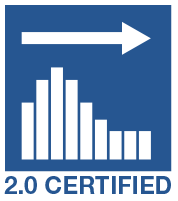Case Studies
Documents
 A look at Autobox's forecasting solutions
A look at Autobox's forecasting solutions
| Date added: | 12/16/2011 |
| Date modified: | 02/15/2012 |
| Filesize: | 145.25 kB |
| Downloads: | 3659 |
Business Problem: Consider a case where we only have 4 readings with each one taken an hour apart. By using data at each minute we are able to increase our sample size to 240. We are not increasing the number of samples, but the statistical calculation is done as if we have, and so the number of degrees of freedom for the significance test is incorrectly increased and a spurious conclusion is reached. This is one of primary causes of "spurious correlation".
 A look at Autobox's forecasting solutions (Annotated)
A look at Autobox's forecasting solutions (Annotated)
| Date added: | 12/16/2011 |
| Date modified: | 02/15/2012 |
| Filesize: | 139.66 kB |
| Downloads: | 3352 |
Annotated Output: We have added some description of what is going on during the modeling steps. This gives the user more insight into what exactly is going on in the modeling process. The annotations are in RED.
 Anheuser-Busch
Anheuser-Busch
| Date added: | 12/16/2011 |
| Date modified: | 03/28/2012 |
| Filesize: | 75.92 kB |
| Downloads: | 3854 |
Business Problem:In-Stock conditions not maximized and inventories at retail too large. The heart of the solution to improving in-stock conditions and minimizing inventories lies in the ability to accurately forecast demand for products at retail.
 Anheuser-Busch (Annotated)
Anheuser-Busch (Annotated)
| Date added: | 01/06/2012 |
| Date modified: | 01/06/2012 |
| Filesize: | 1.14 MB |
| Downloads: | 3861 |
Presentation: Planning the Final Mile of the Supply Chain at Anheuser-Busch, presented at the IBF conference February 23 & 24, 2004. How Anheuser-Busch partnered with a major retail grocery chain to create orders for individual stores.
 Cannibalization Study
Cannibalization Study
| Date added: | 01/06/2012 |
| Date modified: | 01/06/2012 |
| Filesize: | 2.31 MB |
| Downloads: | 3977 |
Presentation: The process of discovering new causal variables: Is unpredictable. Driven by gleaning patterns from historical forecast errors and outliers identified by Autobox. Often leads to causal variables we didn't know existed.






